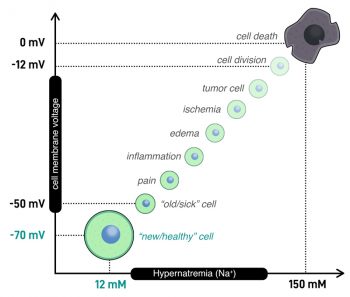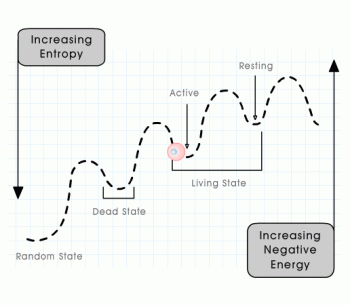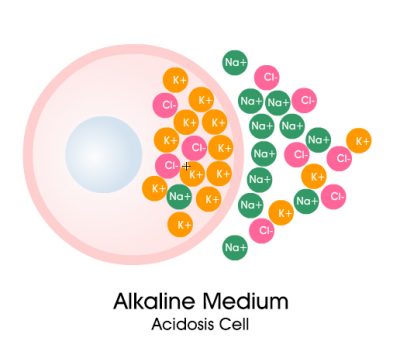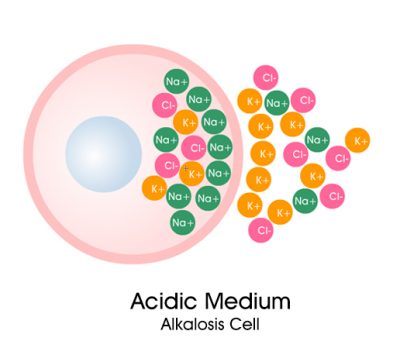“If you want to find the secrets of the Universe, think in terms of energy, frequency and vibration.”

(Nikola Tesla)

The human body is made up of thousands of cells, which are joined together to form tissues, organs and systems, but if we look at the human body from a physicist’s point of view, we are basically made up of atoms.
Atoms are made up of other types of subatomic particles: neutrons, protons, electrons, among others. Normally, atoms have the same number of positive particles (protons) and negative particles (electrons), but when an atom loses or gains electrons, an ion is formed.
An ion with more protons than electrons is called a cation and an ion with more electrons than protons is called an anion, that is, the ions can be both positive and negative and are attracted by ions of opposite charge and can form bonds.
At the cellular level, the plasma membrane potential is the difference in electrical potential or voltage between the interior and exterior of the plasma membrane and the membrane potential is determined by the uneven distribution of ions between the interior and exterior of the cell.
All chronic diseases and most acute diseases are directly caused at the cellular level, in a breakdown of electrical current that is manifested by a decrease in cell membrane potential, a theory advocated by scientists such as Dr. Robert O. Becker and O. Dr. Bjorn Nordenstrom (Chairman of the Nobel Prize Committee).
Cell health can be determined through a simple parameter:
the cell membrane potential.
In a healthy and young cell, its electrical potential voltage is typically between -70 and -90mV which ensures energy production from mitochondria and protein synthesis can be transported through the cell membrane (Cheng et al., 1982; Mannheimer JS, 2005; Wolcott LE et al., 1969).
With advancing age and in the course of a disease, this electrical potential decreases to -40 or -50mV – the so-called cellular aging – and, similarly, pain, inflammation, edema or ischemia can occur even as it decreases up to -15mV.
This value is the threshold at which the cell undergoes cancerous mutation, the potential is so reduced that this, due to its pure instinct for survival, will begin to multiply uncontrollably.

All diseases will relate to a value for cell membrane lost electrical potential.
The therapist’s role is to reverse this process and return the cell to its healthy electrical potential, ideally greater than -70mV.

If the cell is operating normally, it will go through a process of depolarization, reaching, for example, 10mV. As a consequence, potassium enters the intracellular medium to the point of causing hyperpolarization to -90mV or -110mV, with an immediate re-equilibration for a range of -90mV to -70mV.
However, when there is no equilibrium in the content of the extracellular medium, namely salts, minerals and amino acids, the cell is not allowed to repolarize to the correct values: this is the starting point for many imbalances that ultimately lead to disease.
Acid Medium vs. Alkaline Medium
According to this model, the main cause is acidification of the extracellular environment, which means that there are few anions in the cell environment and consequently the extracellular pH decreases.
This acidification of the environment and consequent electrolyte imbalance is often related to renal function.


